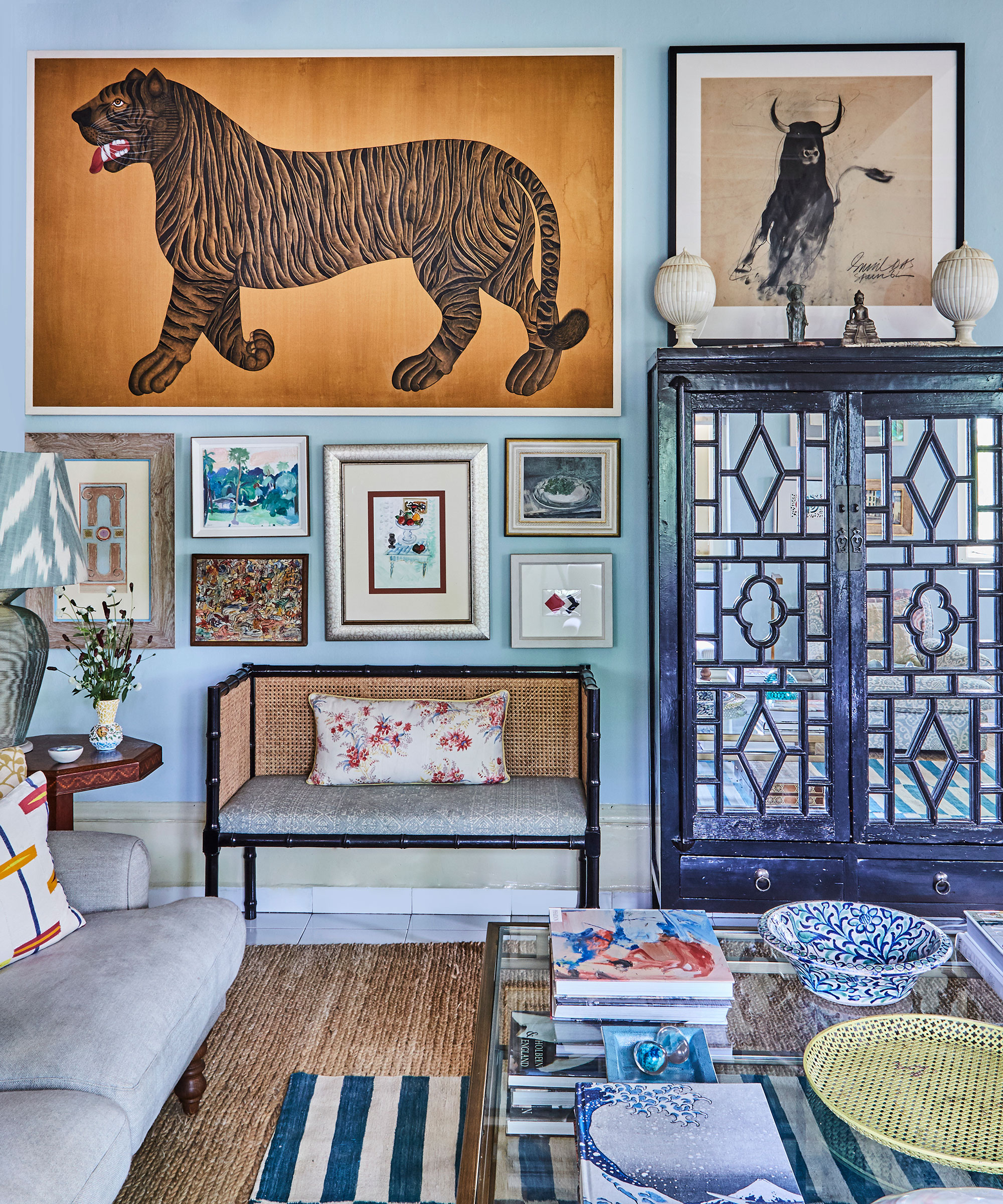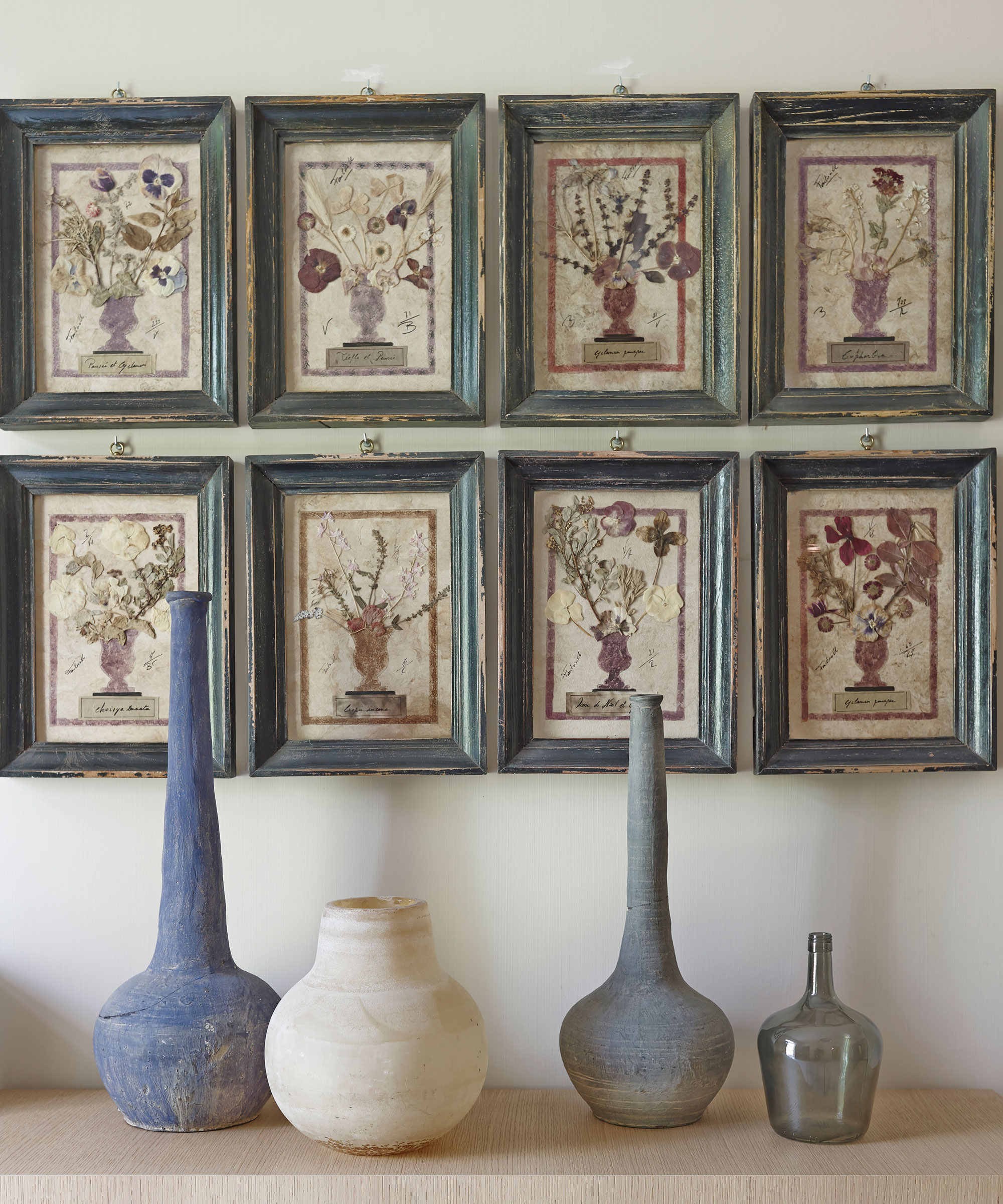
Martha Stewart's various homes have served as a consistent source of design inspiration for us here at H&G. Between her Connecticut farmhouse and her Upper East Side apartment in New York City, Stewart can do urban and rural stylings with class and sophistication. One of her most well-known and beloved estates is the expansive property in Seal Harbour, Maine.
The home, AKA Skylands, recently got a facelift as per Stewart's latest Instagram dispatch. According to her caption, Stewart and her movers spent three hours taking out new furniture and replacing it with some taupe, leather sofas, which contrast with her gallery wall featuring images of birds.
'Of course, there will be color, plants, mirrors, a new rug or two, and other art and objects. Stay tuned!' she states in the caption. 'And by the way, the birds are chromo lithographs by Carroll Tyson, known as the "6Audubon of Maine."'
We were taken by the wall of prints, which taps into an ever-popular trend of decorating a single wall with several works.
'Gallery walls have remained a beloved design trend for years, celebrated for their ability to infuse personal style and creativity into any space,' says designer Nina Lichtenstein. 'The enduring appeal of gallery walls lies in their versatility, the opportunity they offer for self-expression, and the dynamic visual interest they bring to interiors.'
One of the best parts of a gallery wall is that they are entirely up to one's personal tastes and, for many, are a way to express one's interests in one place. In Stewart's case, her sense of uniqueness comes in the form of her personal bird prints that resonate with her and her home. However, as Lichtenstein reassures, there is no exact right or wrong. Just as Stewart has done, we simply need to find something that is meaningful to us.
'Gallery walls provide a canvas for displaying a curated collection of artworks, photographs, and mementos, making them deeply personal and unique to each home,' she explains. 'They allow individuals to showcase their tastes, experiences, and memories, turning a blank wall into a storytelling medium.
'Suitable for various spaces, from living rooms and hallways to bedrooms and offices, gallery walls can adapt to any room's size and function,' she says. 'They can range from a tight, uniform grid to an eclectic mix of frames and styles, offering endless design possibilities.'

Lichtenstein adds that gallery walls should involve some careful planning, and this begins with the layout.
'Lay out your frames on the floor to experiment with different arrangements before committing to a design on the wall,' she states. 'Use painter's tape to outline the desired layout on the wall, ensuring balance and cohesion.' We should also remember to make our walls diverse, not only in the works being displayed but the kinds of enclosures they are housed in.
'Combine various frame sizes, shapes, and colors to add visual interest. Mixing materials, such as wood, metal, and painted frames, can enhance the eclectic feel. Include a mix of art styles – photographs, paintings, prints, and even three-dimensional objects can work together harmoniously.'

One of the primary steps in creating a gallery wall is establishing a focal point; a place where the eye naturally lands, which maintains visual interest.
'Start with a central piece that anchors the gallery wall, then build outward,' Lichtenstein says. 'This focal point should be something that stands out, such as a larger or more vibrant artwork. Ensure that the central piece is at eye level to create a natural, comfortable viewing experience.'
Another top tip is to leave equal amounts of space between hanging works.
'Keep the spacing between frames consistent to achieve a cohesive look,' Lichtenstein states. 'A standard gap of at least two to three inches is a good rule of thumb. Use a level and measuring tape to ensure even spacing and alignment.'
Finally, think about tapping into a specific theme, just as Stewart has done with her bird prints.
'Consider a thematic approach, such as black-and-white photography, botanical prints, or abstract art, to create a cohesive narrative,' Lichtenstein explains. 'Themes can provide a unifying element that ties the diverse pieces together.'
Overall, gallery walls are meant to be a form of self-expression, so that even thought with minimal or neutral design schemes can show some personality in their home. We suggest curating works thoughtfully so that each piece hanging on the wall is meaningful (and potentially even a point of a design discussion).







